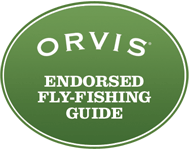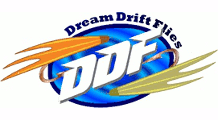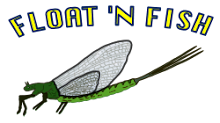Since I can't think of any good fishing stories or have any new patterns ready to unveil, I thought I would toss a few things out there for you that might be helpful.
The first tip I want to share with you is the sizes of the foam bodies I use for The Hopper Juan. While many people don't have the foam cutters I use, I recommend them for the ease of making these bodies. If you can't obtain them or would just rather use scissors, here are the sizes that you should aim for.
For size 6 Hopper Juan's, I use the large cutter, which is roughly 7mm in width. For my favorite size, size 8, I use the medium size which is about 6mm. The small is about 5mm, and I use those for size 10 Hoppers. If you want to cut these bodies straight, I recommend using a piece of glass or a self healing mat and a very sharp razor and a metal straight edge such as the one in the picture above. Measure the widths and run the blade down the straight edge and try not to cut yourself. It doesn't take much using a sharp bade. Using these tools, you can make several strips of foam for hopper use.
The other tip I will share with you is the use of Water Shed on your dry flies. I use this on all my dry flies and I do believe that it does help. If you want proof, just put a drop of it on an untreated fly. It soaks it up like a sponge. The same thing happens when you put your untreated fly on the water for the first time. I even go so far as to treat my hoppers with this stuff. Elk hair and synthetics soak up water and if you can help prevent that, then you are a step ahead of most people. Your flies will still eventually soak up water and may need to be changed, but I usually don't mind if it's the fish that are causing that problem. Water Shed is distributed through Hareline Dubbin Inc.
Subscribe to:
Post Comments (Atom)













































Do you have a recommendation on the length of the foam strips?
ReplyDeleteThanks
Norm,
ReplyDeleteOn the medium strips, I can get them about 38mm in length. The small and large will vary a bit on both sides, but I use the med. the most.
Juan
I always did it by trial and error...after error...after error. Its good to have a gage. Thanks
ReplyDeleteby the way, I just put 2 and 2 together with your name and found out I used a video you posted on Vimoe for a post a few days back. Thanks
ReplyDeleteMy wife is a die hard quilter. What's your thoughts about using the cutting board they use and the circle cutter?
ReplyDeleteMark
AYearOnTheFly,
ReplyDeleteI am familiar with your work and you have a great site. I see it all around the blog circuit. I enjoy looking at your work. Thanks for posting that video. Keep up the good work.
Juan
Shoreman,
ReplyDeleteI am sure you could use the rotary cutters for most items, but I am not sure how it will cut the foam. Try it and let us all know if it works. The cutting board will work great for what you need it to do. I some times uses box cutter razors, but more often use the double edged razors that I get at Wal-Mart. I know a few people that use the rotary cutters for everything.
Juan
I tied some of your hoppers but the first one I tried floated on its side. I'm probably making a novice tying mistake, but any suggestions? Thanks.
ReplyDeletePaul
Paul,
ReplyDeleteThanks for trying out my pattern. With a little practice, you will be making good ones in no time. You have to look at tying this fly as you would building a boat. If you started off with a narrow width of a canoe and had the height of a sailboat, you would be in for a bath in no time. You might have too narrow a body and too tall a wing/indicator. This will cause it to be top heavy. Also, a really thick amount of hair will cause it to flop on it's side. Start with a good wide base and make sure your foam and fly is tight. I hope this helps and let us know how it goes.
Juan
Very clear! You hpper is very nice!
ReplyDelete